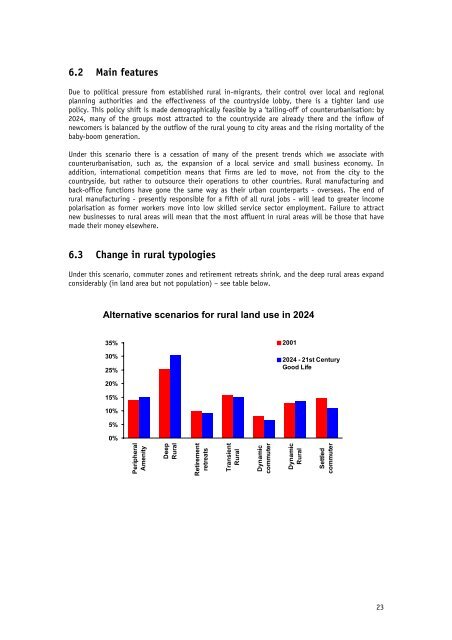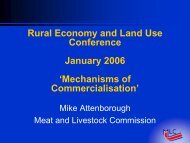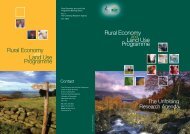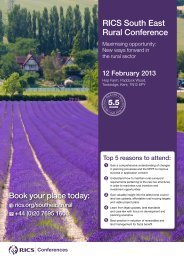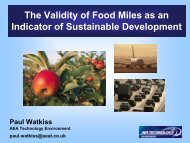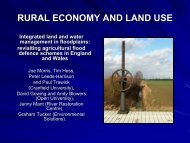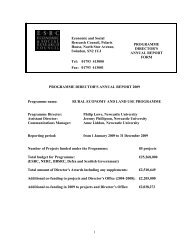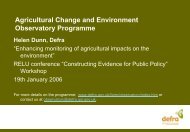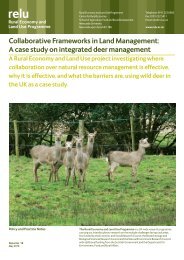Future Society in 2024: 21st Century 'Good Life' - Rural Economy ...
Future Society in 2024: 21st Century 'Good Life' - Rural Economy ...
Future Society in 2024: 21st Century 'Good Life' - Rural Economy ...
You also want an ePaper? Increase the reach of your titles
YUMPU automatically turns print PDFs into web optimized ePapers that Google loves.
6.2 Ma<strong>in</strong> features<br />
Due to political pressure from established rural <strong>in</strong>-migrants, their control over local and regional<br />
plann<strong>in</strong>g authorities and the effectiveness of the countryside lobby, there is a tighter land use<br />
policy. This policy shift is made demographically feasible by a ‘tail<strong>in</strong>g-off’ of counterurbanisation: by<br />
<strong>2024</strong>, many of the groups most attracted to the countryside are already there and the <strong>in</strong>flow of<br />
newcomers is balanced by the outflow of the rural young to city areas and the ris<strong>in</strong>g mortality of the<br />
baby-boom generation.<br />
Under this scenario there is a cessation of many of the present trends which we associate with<br />
counterurbanisation, such as, the expansion of a local service and small bus<strong>in</strong>ess economy. In<br />
addition, <strong>in</strong>ternational competition means that firms are led to move, not from the city to the<br />
countryside, but rather to outsource their operations to other countries. <strong>Rural</strong> manufactur<strong>in</strong>g and<br />
back-office functions have gone the same way as their urban counterparts - overseas. The end of<br />
rural manufactur<strong>in</strong>g - presently responsible for a fifth of all rural jobs - will lead to greater <strong>in</strong>come<br />
polarisation as former workers move <strong>in</strong>to low skilled service sector employment. Failure to attract<br />
new bus<strong>in</strong>esses to rural areas will mean that the most affluent <strong>in</strong> rural areas will be those that have<br />
made their money elsewhere.<br />
6.3 Change <strong>in</strong> rural typologies<br />
Under this scenario, commuter zones and retirement retreats shr<strong>in</strong>k, and the deep rural areas expand<br />
considerably (<strong>in</strong> land area but not population) – see table below.<br />
Alternative scenarios for rural land use <strong>in</strong> <strong>2024</strong><br />
35%<br />
30%<br />
25%<br />
2001<br />
<strong>2024</strong> - <strong>21st</strong> <strong>Century</strong><br />
Good Life<br />
20%<br />
15%<br />
10%<br />
5%<br />
0%<br />
Peripheral<br />
Amenity<br />
Deep<br />
<strong>Rural</strong><br />
Retirement<br />
retreats<br />
Transient<br />
<strong>Rural</strong><br />
Dynamic<br />
commuter<br />
Dynamic<br />
<strong>Rural</strong><br />
Settled<br />
commuter<br />
23


